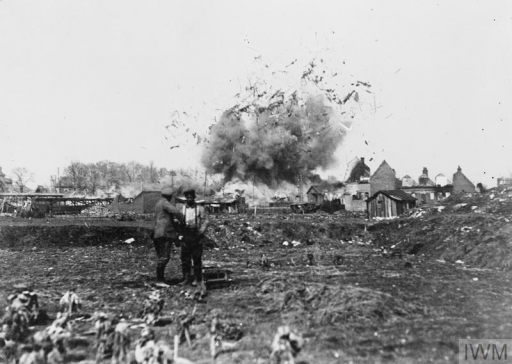German troops pulled back to new defensive positions on the Western Front in spring 1917 as they prepared to face renewed Allied onslaughts in France.
Construction of the Siegfried Stellung, known to the Allies as the Hindenburg Line, gave the Germans the significant advantage of shortening their lines of defence.
Salients, or bulges, in the front were ironed out, easing troop shortages after the Battles of Verdun and the Somme.
The strategic withdrawal, conceived by the supreme commanders Field Marshal Paul von Hindenburg and General Erich Ludendorff, also enabled the German Army to fight on its chosen ground.
Armies of labourers, including Russian prisoners-of-war, were drafted in to build the chain of fortified gun emplacements, concrete bunkers and trenches in the winter of 1916/17.
The Germans pursued a ‘scorched earth’ policy as they fell back, destroying towns, villages, roads, railways and bridges to frustrate the Allies.

Field Marshal Hindenburg, portrayed on a 1914 commemorative plate (Photo: Centenary News)
Among the evacuated battlefields was the Somme, allowing Australian troops to enter Bapaume on 17 March 1917, a failed objective at the opening of the British-led 1916 offensive.
“Scores of villages are burning” reported Britain’s Daily Telegraph newspaper. “There is no beauty left, and no homesteads nor farms, but only the black ruins and devastation everywhere.”
The German Army was newly-installed on the Hindenburg Line when it faced the British and French challenges at Arras and on the Chemin des Dames, near Laon, in April 1917.
In the spring of 1918, the line was the starting point for the German offensive which threatened to overwhelm the Allies in the final year of the First World War.
Sources: Wikipedia/Daily Telegraph Archive/various
Images courtesy of Imperial War Museums © IWM Q 57506 (German retreat from the Somme); Centenary News (Hindenburg Commemorative plate)
Posted by: CN Editorial Team
